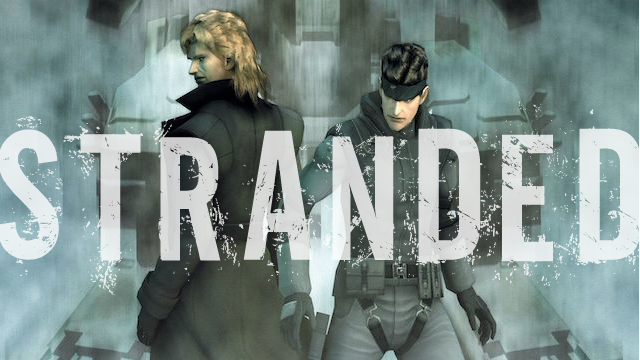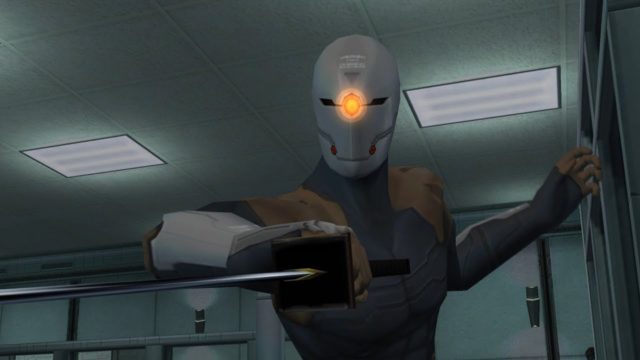
In 1998, legendary game designer Hideo Kojima brought the world Metal Gear Solid on Sony’s PlayStation. The game was a watershed moment for the industry. Its fully-voiced dialogue, cinematic-heavy storyline, and ingenious stealth-action gameplay made it an instant classic. Six years later in 2004, Konami returned to MGS in the form of Metal Gear Solid: The Twin Snakes on Nintendo GameCube. Konami partnered with Nintendo and Silicon Knights (of Eternal Darkness fame) to produce this remake of the PlayStation original and the results were astounding.
I sadly didn’t get to play Twin Snakes when it launched. I ended up borrowing it from my uncle Michael a couple of years later, instead. I remember Nintendo Power and a handful of other magazines like EGM making a big deal out of the title leading up to and when it dropped, but it wasn’t until that fateful, random day years later when I decided to go out on a limb and give it a shot. Talk about a culture shock. My formative years rarely strayed beyond the Nintendo ecosystem, so titles like Metal Gear Solid were largely unknown quantities to me. Twin Snakes was the sort of game that was symbolic of the more… grown-up, or sophisticated, side of gaming that PlayStation represented in my mind (at the time).
Outside of a handful of installments across the company’s various consoles over the years, Metal Gear Solid as a franchise typically isn’t as well known to most Nintendo fans. The series tends to be perceived as a PlayStation property, which is how I still think of it to this day, regardless of the fact that it has been multi-platform for years. Because of this, Twin Snakes felt fresh and exciting to me. It was the chance to play something darker and edgier on a Nintendo platform. I’ve always found our military fascinating, so the fact that the game dabbled in espionage and warfare made it even more enticing.
I wasn’t disappointed. Booting up Twin Snakes, its dramatic title screen made me feel like I was interacting with a secret spy document on some kind of super computer. The sound effects were perfect, not to mention the “high tech” design of the menus themselves. I found myself starting off with the debrief, where a series of cinematics unfolded between lead character Solid Snake, his commander Colonel Roy Campbell, and Doctor Naomi Hunter. It’s possible to launch into the game straight away, but to not watch the debrief is to miss out on a ton of fascinating story material. It really sets the tone for what’s to come.
The Metal Gear Solid franchise has a notoriously complicated, convoluted, and sometimes downright confusing narrative across its numerous installments, but Twin Snakes is arguably the tightest and most enjoyable story in the series. Prior to MGS on PlayStation, the last Metal Gear game was Metal Gear 2: Solid Snake on the MSX system in Japan in 1990. Western fans got an “unofficial” (meaning, not made by Kojima) sequel to Metal Gear on NES in the form of Snake’s Revenge that same year. It would be eight years before Kojima returned to the franchise with MGS, and he’s reiterated countless times that he approaches every Metal Gear Solid installment as though it’s the last.
As a byproduct of this, I sometimes wonder if MGS/Twin Snakes has such a satisfying storyline because Kojima genuinely wrote it thinking (this isn’t a real quote), “this is the last shot I’m going to have with this character, so I better say what I have to say now.” Sure, it’s ridiculous at times, with some insanely over-the-top dialogue and plot twists, but overall MGS, and by extension Twin Snakes, had me riveted the whole time. Liquid, Snake’s previously unknown “twin,” was a terrifically badass counterpart. I’ve always been drawn to light and dark versions of characters, and the juxtaposition of Solid’s cool, collected personality against Liquid’s loud, unrestrained demeanor was a joy to soak in.

There’s more to Twin Snakes than just Solid versus Liquid, though. Characters like Hal Emmerich and rookie soldier Meryl Silverburgh inject a lot of humanity into the cold, brutal world that Snake calls home. They also help to remind Snake who he’s fighting for, a valuable lesson that powers him through the rest of the series. Enemies like Revolver Ocelot, Sniper Wolf, and the other rogue members of FOXHOUND provide a ton of fun character moments and intense action scenes, as well. Twin Snakes feels like the sort of blockbuster that Hollywood doesn’t make anymore.
Speaking of, veteran Japanese action film director Ryuhei Kitamura was called in to handle the cinema scenes in Twin Snakes. Coupled with the horsepower of GameCube, the resultant fight scenes in Twin Snakes were bold, kinetic, and visceral. None more so than the encounter between Snake and the Cyborg Ninja. I won’t spoil it here, but the scenes with Ninja are nuts. He’s an unsettling figure when he first appears, but as the story unfolds and more of his backstory is revealed, odds are that your perception of him will change like it did for me. It’s clear that The Matrix had a pretty big impact on Kitamura as he put together these cinematics, but aside from some arbitrary bullet-time slow motion, this is some killer choreography.
A lot was made of Metal Gear Solid 2: Sons of Liberty when it launched on PlayStation 2. I can remember at least one media outlet derisively declared that the water physics of GameCube’s Wave Race: Bluestorm were just a part of the overall package of MGS2. Well, the joke was on them, because when MGS2 finally did hit PS2, fans were largely horrified to discover that Snake was only playable in the opening Tanker scenario and not the rest of the game. Ha! I jest— MGS2 is still an exceptional game, but what I’m driving at here is that the same tech that powered MGS2 was ironically adapted for Twin Snakes. Meaning the beautiful graphics and additional play mechanics in that sequel were incorporated into this remake of MGS.

The result is a stunning feat of design and play control. Snake’s initial insertion into the heavily fortified Shadow Moses Island nuclear disposal site in Alaska’s Fox Archipelago was tense and exhilarating to me. Everything looked so gorgeous and realistic. I could almost feel the cold as Snake emerged from frigid waters (thank goodness for that anti-freezing peptide!). It was the gameplay, though, that impressed even more. The emphasis in any Metal Gear Solid game is on not engaging the enemy unless absolutely necessary. Despite being on a battlefield, killing foes isn’t presented as the only choice to proceed— indeed, players are often rewarded for going through the game stunning baddies instead of offing them. It was so unusual, yet it was because of this quirkiness that I found myself completely drawn into the action.
Plus, Snake is as cool as it gets. His sneaking suit in this game is, as far as I’m concerned, still his best. Voice actor David Hayter was the perfect choice for Snake and it’s a crime that he was removed as of Metal Gear Solid V. His performance in Twin Snakes revealed a man who’s confident but also clearly weary of the endless games of subterfuge and war that unfold around him. I found Snake very easy to root for and count him as one of my favorite characters in any form of media to this day. He constantly views himself among the scum of the world because of the lives he’s taken as a soldier, but his nobility and selflessness make him a true hero regardless of his protestations.
There’s some debate about how additions like first-person shooting reduced the difficulty level of a few of the boss fights (like when Snake takes on Ocelot, for instance), but these are minor grievances as far as I’m concerned. The more complex AI of the guards makes sneaking around a lot tougher in Twin Snakes than in the original MGS. It’s also key to hide guards after killing or knocking them out, as in Twin Snakes their bodies don’t disappear as they do in the PlayStation MGS. There might be some softened encounters with FOXHOUND in Twin Snakes, but they’re balanced with the overarching boost in difficulty as a whole.

Before I go, I’d like to point out that the Psycho Mantis boss fight remains one of the most entertaining in all of video games. I won’t spoil it here, even if this is a 15 year old game, but know that if you ever get the chance to play Twin Snakes (or even MGS) that it’s a total mind bender. The battle is emblematic of the sort of outside the box thinking that made the original and even this GameCube version of MGS so endearing. Heck, Kojima was so full of ideas when making MGS that the actual game box is used as part of the game! There are so many optional radio conversations to listen to, so many nooks and crannies to scour, that Twin Snakes is like a living, breathing organism to interact with. I walked away desperate for more and honestly have never felt like Kojima ever truly recaptured the glory of this outing.
Sadly, there’s currently no way of playing Twin Snakes anywhere but on a GameCube. There had been a glimmer of hope for a new port when former head of Silicon Knights Denis Dyack tweeted that if fan demand was high enough that he’s sure “something could be done” to get the game onto Switch (at the time still codenamed NX). That Tweet is already nearly three years ago at this point, however, and considering Konami’s… tenuous position as a video game developer these days, it’s definitely unclear whether the gears would ever get turning on a proper port of Twin Snakes. Hey, not that I’d object! It’s my favorite Metal Gear Solid game (although Metal Gear Solid 4 is a close second) and one that I’d really love to see more people play. If you still have a GameCube handy I highly recommend tracking down a copy of Twin Snakes and giving it a whirl!
Shoutout to MGSmainthemeBACK for uploading this lengthy Tokyo Game Show trailer for Twin Snakes!




 ShareThis
ShareThis





